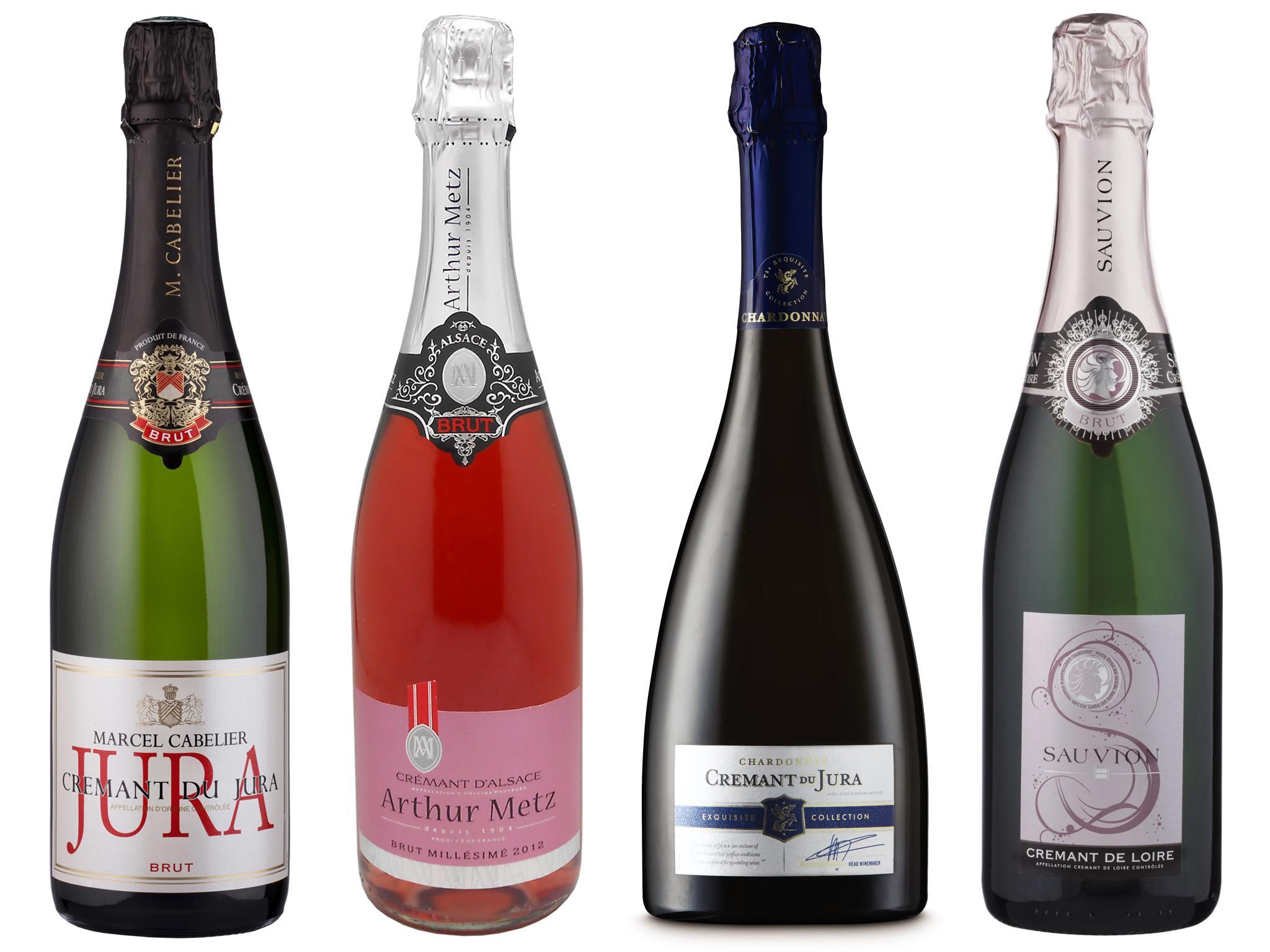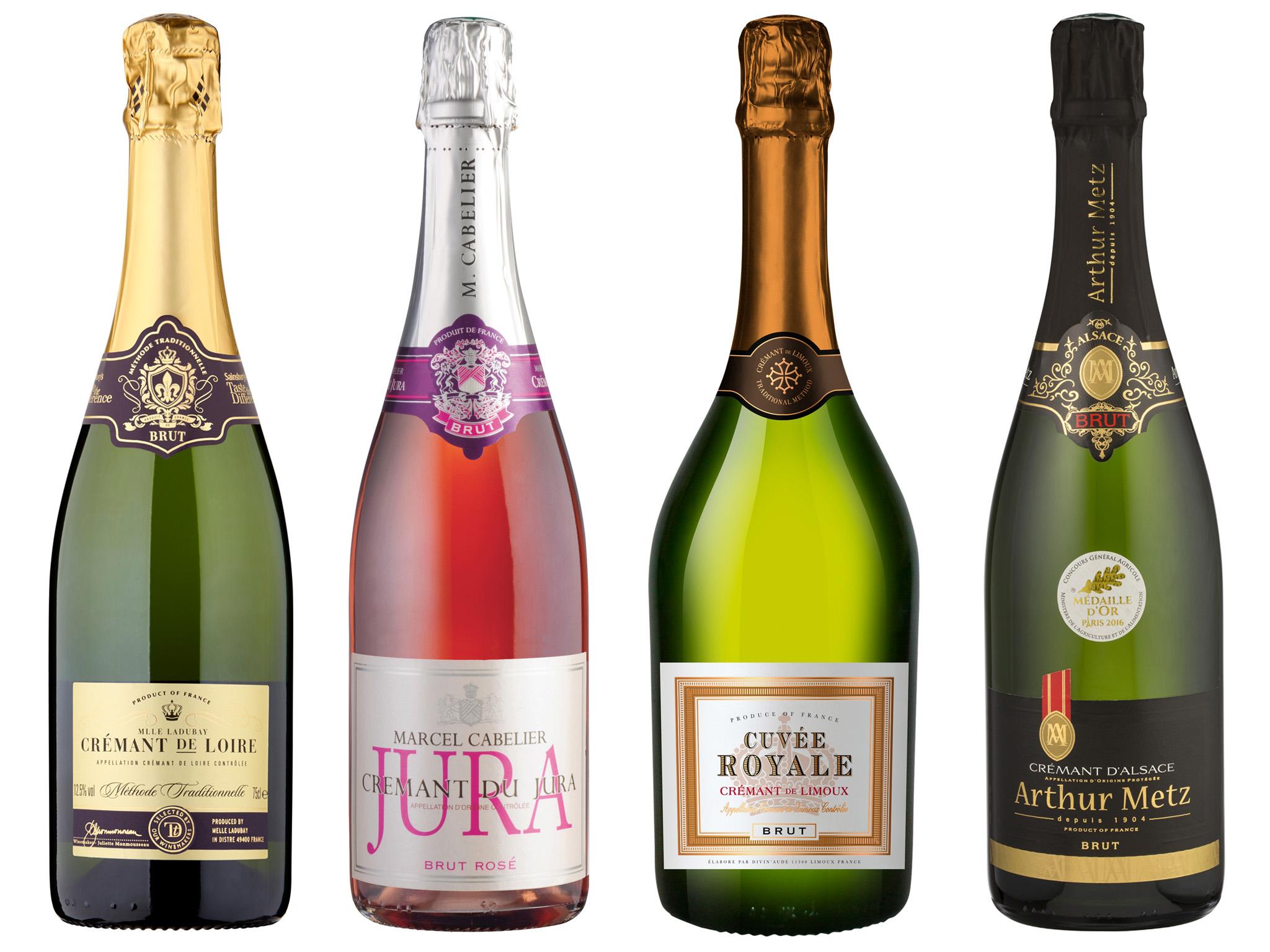The Independent's journalism is supported by our readers. When you purchase through links on our site, we may earn commission.
Wines of the week: 10 crémants
The sparkler du jour crémant is muscling in on prosecco’s domination of the affordable end of the market. Terry Kirby takes a tour of France to find 10 bottles that bubble to the top

Your support helps us to tell the story
From reproductive rights to climate change to Big Tech, The Independent is on the ground when the story is developing. Whether it's investigating the financials of Elon Musk's pro-Trump PAC or producing our latest documentary, 'The A Word', which shines a light on the American women fighting for reproductive rights, we know how important it is to parse out the facts from the messaging.
At such a critical moment in US history, we need reporters on the ground. Your donation allows us to keep sending journalists to speak to both sides of the story.
The Independent is trusted by Americans across the entire political spectrum. And unlike many other quality news outlets, we choose not to lock Americans out of our reporting and analysis with paywalls. We believe quality journalism should be available to everyone, paid for by those who can afford it.
Your support makes all the difference.Crémant, which many have described as France’s best kept sparkling wine secret, is a secret no more. In fact, it is having a bit of a moment, with sales in Britain suddenly rising almost exponentially. According to Waitrose, sales in 2017 rose a whopping 72 per cent over the previous year and are already 62 per cent up this year. According to official French figures, exports to the UK of crémant from Burgundy and the Loire rose by 98 per cent and 25 per cent respectively in the 12 months to the end of March.
There is a massive potential market. We have long been in thrall to Champagne, English sparking – of which more next week – is booming and we are now consuming so much prosecco the lake is in danger of drying up.
Carving a decent share is more difficult, which is why crémant has possibly been a bit below the radar until now. But prosecco’s very ubiquity has both awakened many people to the idea of a more everyday sparkler – picnics, barbecues or to brighten up a takeaway – as opposed to a special occasion one, while it has also prompted consumers to search for, dare one say it, classier alternatives, without pushing the boat out. Normally priced somewhere between £10 and £16 and with a readily identifiable name, crémant fits that bill admirably. All are easily drinkable as party wines, aperitifs and with food, particularly fish and shellfish.
As a wine, crémant style is also probably more approachable than many champagnes – generally lighter, sometimes floral, always refreshing and less austere – and certainly drier than most proseccos. It is also, as the name suggests, sometimes quite creamy and frothy, but without being sweet.
There is also a very dependable quality: in a country where the individuality of locality is paramount, crémant is arguably the only national French wine style, with eight very different areas all of which are governed by regulations designed to ensure standards: grapes handpicked, pressing controlled to achieve the right concentration of juice, made according to the time honoured methode traditionale used for Champagne (and most English sparkling) and aged for a minimum of 12 months. The individuality, trumping homogenised prosecco, comes from the local grape varieties used in each of these areas to impart different aromas and flavours.
So, off we go on a quick trip around France, starting in the northeast, in Alsace, near the German border, which produces around 50 per cent of French crémant, but the canny locals keep most of it themselves, although some are available in UK. Try the Arthur Metz Crémantd’Alsace Brut (£11.24 Ocado.com, until June 12; normally £14.99; £15.99 Henningswine.co.uk) made by the biggest player in the region mostly from the slightly less well known pinot blanc grape, with some pinot noir, pinot gris and riesling in the mix, it’s a richer, yeasty, more complex style, which tends to be the Alsace trademark. Ocado – which does have a good range of crémants – also does the terrific pinot noir Arthur Metz Brut Rosé and the slightly creamier, chardonnay-dominated organic version, Arthur Metz Crémant d’Alsace Brut Biologique (both £11.24 Ocado.com, until June 12; normally £14.99).

The crémant regions form a rough circle around France’ extremities, so, moving anticlockwise and south to the mountainous Jura region, one of the great crémant bargains is the Exquisite Collection Crémant du Jura (£7.99 Aldi.co.uk) which punches so far above its price point it’s almost ridiculous – a 100 per cent chardonnay, it’s refreshing, creamy, elegant and balanced, ideal for both parties and the dinner table. Production in the Jura is small and demand high, so Aldi has gone to the same respected regional producer, Maison du Vigneron, for a crémant d’Alsace which will share the same space on its shelves from next year; watch out for it. Also from Maison du Vigneron is the very classy Marcel Cabelier Crémant du Jura Brut, (£13.99 Ocado.com) made from chardonnay and the local red grapes, poulsard and trousseau, which has floral, lemon curd and brioche flavours and a long, slightly earthy finish: again, something of a trademark style.
Moving west to Burgundy, the Le Caves des Hautes Cotes Crémant de Bourgogne (£12 Marksandspencher.com) is on the creamy side, with the local aligoté grape in the mix of pinot noir and chardonnay. Burgundy, with its long tradition of ageing wines, is also introducing two new classifications of aged crémants – Eminent for 24 months minimum and Grand Eminent for 36 months, although they’re not yet on the market here.
Bypassing the tiny appellations of Savoie and Die, whose wines do not really make the UK off-trade although you might be lucky to find the odd one in a restaurant – the next stop is Limoux in the shadow of the Pyrenees in the Languedoc, which has a long tradition of making sparklers. One of the reasons for the Waitrose sales increase may be the excellent Cuvée Royale Brut Crémant de Limoux (£11.99 Waitrose.com; Ocado.com) a chardonnay, chenin blanc and pinot noir combination that is a typical light and refreshing limoux.
Jumping over Bordeaux, where again crémant production is smallish, (but look out for a budget Bordeaux crémant in Lidl later this month) we come finally to the Loire, the second-biggest sparkling area after Champagne, although not all designated crémant. The quince and apricot flavours of chenin blanc and the richer structure of red cabernet franc come into play here, and there is a good choice for UK buyers. Waitrose also has the pear and apple flavoured Prince Alexandre Crémant de Loire (£9.74; until 5 June; normally £12.99 Waitrose.com); Sainsbury’s has peaches and honeysuckle scented Taste the Difference Crémant de Loire (£11 Sainsburys.co.uk) from one of the top producers in the region, Bouvet Ladubey; and the Wine Society has The Society’s Celebration Crémant de Loire (£12.95 Winesociety.com), made for them by another leader in the field, Gratien and Meyer. For something just a cut above, the Sauvion Crémant de Loire Brut (£13.35 Addisonwines.com; £13.99 Flagshipwines.co.uk): slightly richer, creamy and satisfying. There is also a really lovely raspberry inflected cabernet franc pink, Sauvion Crémant de Loire Brut Rosé (£13.35 Addisonwines.com; £15.53 Gpbrands.eu).
Also: keep an eye open for the Marquis de Goulaine Crémant de Loire Tete de Cuvée, coming to Marks and Spencer next month (price to be confirmed) and a sure sign crémant is on the march. And if that’s not enough to wean you off prosecco, I give up.
Join our commenting forum
Join thought-provoking conversations, follow other Independent readers and see their replies
Comments